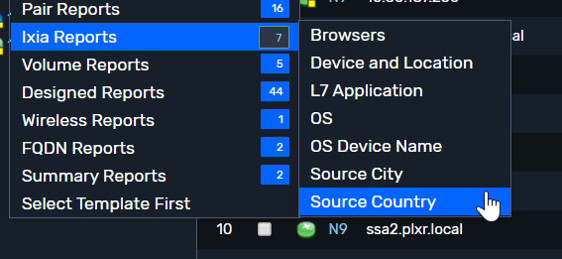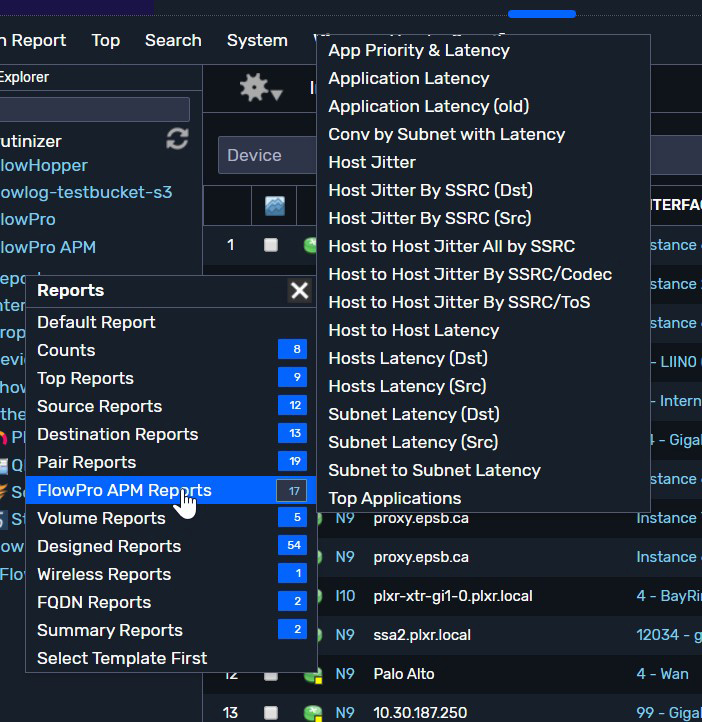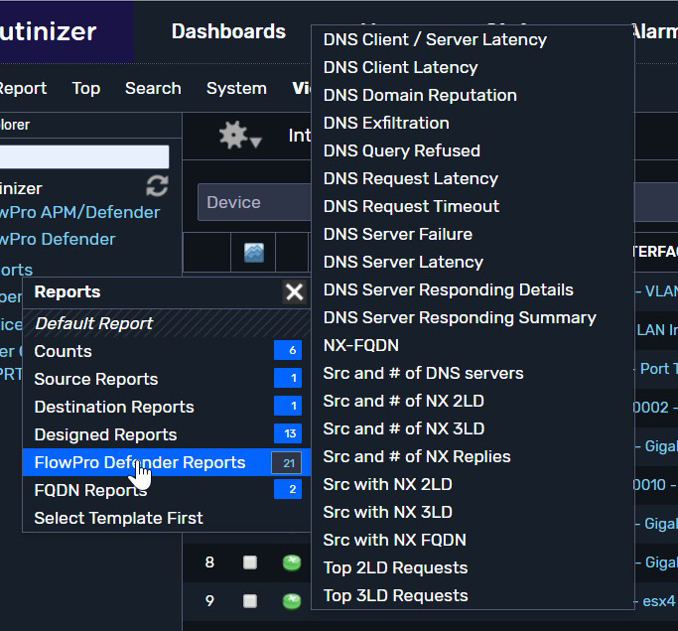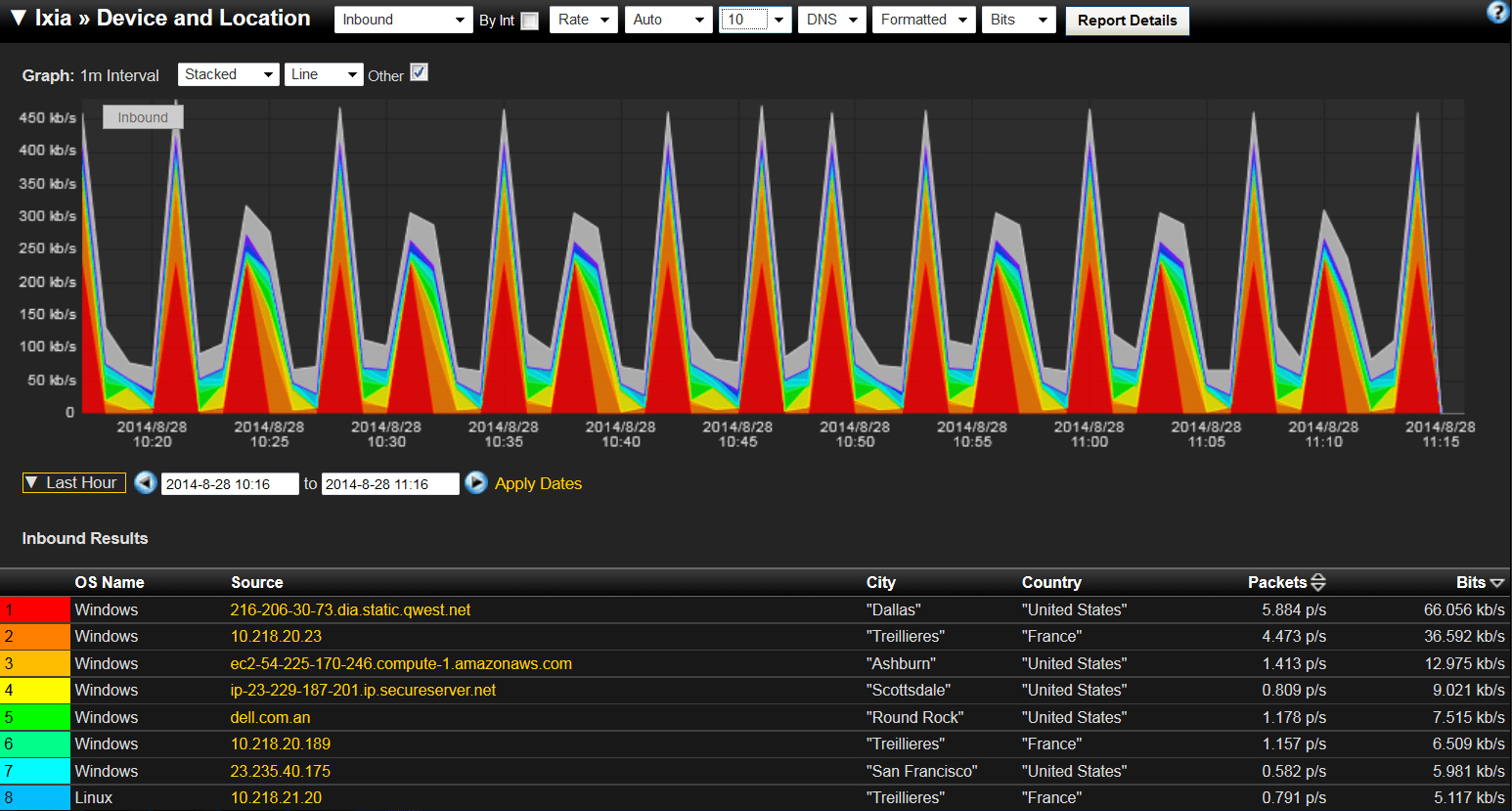Both IxiaFlow and Plixer’s FlowPro are used for similar ends – to monitor flow traffic and data – but go about it slightly differently, not least in their reporting capabilities. But first: what is flow monitoring?
Network flows are the messages exchanged between the opening and closing of a network session. If a connection is made, information – data – flows between the source and destination, and this information is extremely valuable to network managers. It’s this information that tells us whether a connection is good, whether the network is performing as intended, and whether any security vulnerabilities exist within the connection. It’s where insight begins, and problem resolution starts.
Flow data is different from packet data, which is detailed data taken from network packets. Flow data is an aggregated form of data, and is an effective way of generating information required to troubleshoot network issues, resolve intermittent network performance problems, and map historical trends for capacity planning.
Its key advantages are that it provides network managers with timestamps, senders’ and receivers’ IP addresses, ports used within communication sessions, their length, and the amount of data transferred. From this, the use cases of each tool – IxiaFlow and FlowPro – become apparent: they include real-time bandwidth monitoring, and the ability to identify trends and abnormal bandwidth allocation.
In reality, however, there are many use cases that are made possible or benefit from the enrichment of flow data. But insight isn’t just created through monitoring but, rather, the detailed reporting of data monitored.
What IxiaFlow gives you
IxiaFlow provides flow data reports on the following fields:
- Browsers

- Device and location
- L7 application
- Operating system
- Device name
- Source city
- Source country
Each of these detailed reports will help you drive network optimisation, gain a clearer understanding of your network traffic and users, and, ultimately, arm you with a repository of useful historical information to more rapidly resolve future bottlenecks and security threats.
What Plixer’s FlowPro gives you
FlowPro APM (application performance monitoring) provides an extensive list of reports, which help you drill down into the specifics of user behaviour and the minutiae of network connections. These include:
- App priority and latency

- Application latency
- Application latency (old)
- Conv by Subnet with latency
- Host jitter
- Host jitter by SSRC (Dst)
- Host jitter by SSRC (Src)
- Host-to-host jitter all by SSRC
- Host-to-host jitter by SSRC/Codec
- Host-to-host jitter by SSRC/ToS
- Host-to-host latency
- Hosts latency (Dst)
- Hosts latency (Src)
- Subnet Latency (Dst)
- Subnet Latency (Src)
- Subnet-to-subnet latency
- Top applications
Meanwhile, Plixier’s FlowPro Defender features an array of report options to provide essential security information. These include:
- DNS client/server latency

- DNS client latency
- DNS domain reputation
- DNS exfiltration
- DNS query refused
- DNS request latency
- DNS request timeout
- DNS server failure
- DNS server latency
- DNS server responding details
- DNS server responding summary
- NX-FQDN
- Src and # of DNS servers
- Src and # of NX 2LD
- Src and # of NX 3LD
- Src and # of NX replies
- Src and NX 2LD
- Src with NX 3LD
- Src with NX FQDN
- Top 2LD requests
- Top 3LD requests
It injects fully qualified domain names (FQDNs) into your flows, with FQDN reports available for destination FQDN and host-to-host with Dst FQDN, as well as additional security monitoring algorithms once combined with Scrutinizer’s flow analytics.
IxiaFlow is a standalone product whilst FlowPro APM and Defender are available to order separately. For more information on network monitoring and improving your network security and performance with the solutions discussed here, contact us today.


